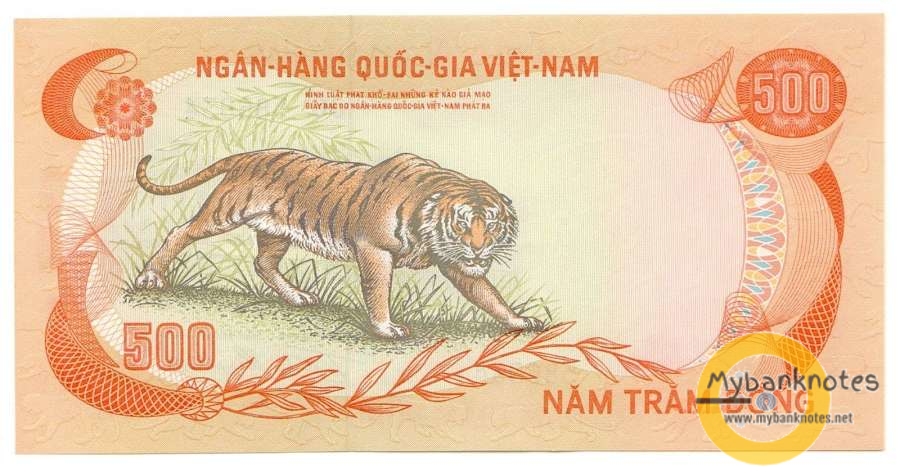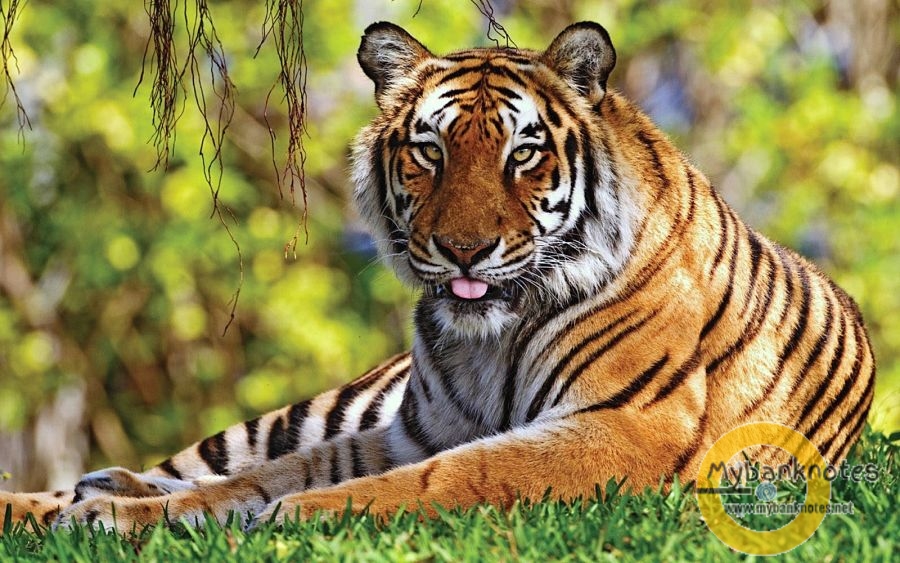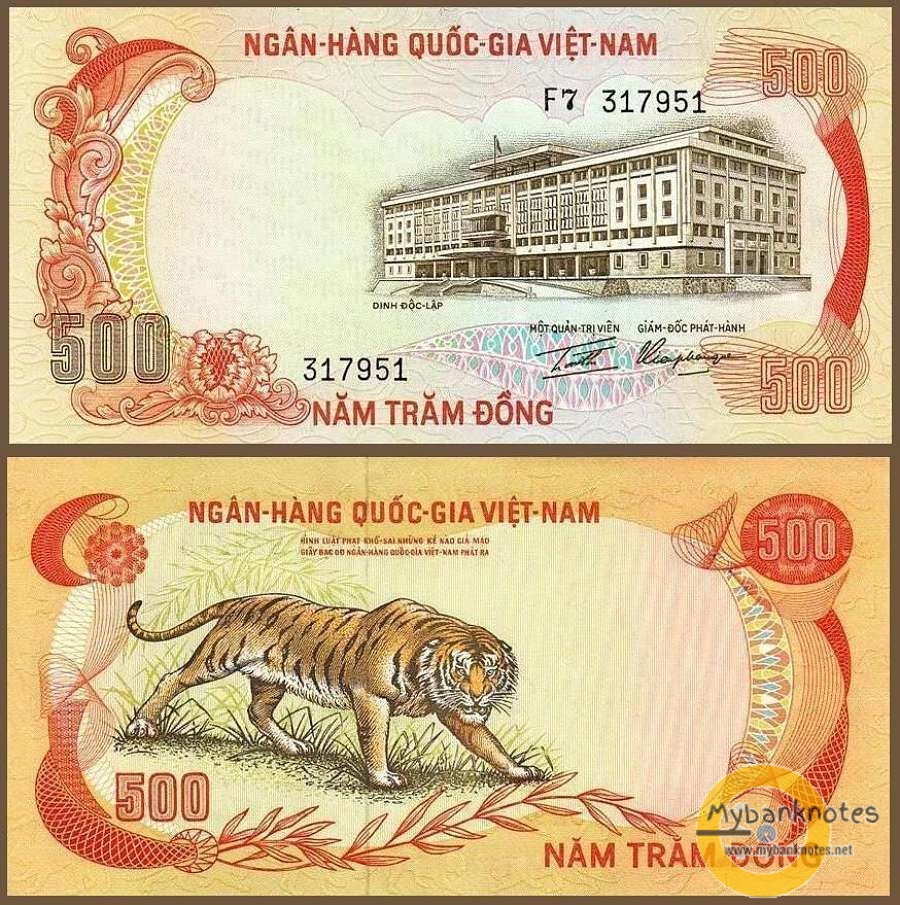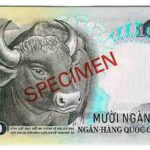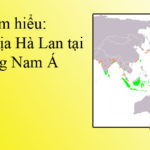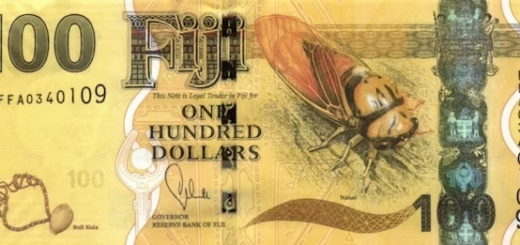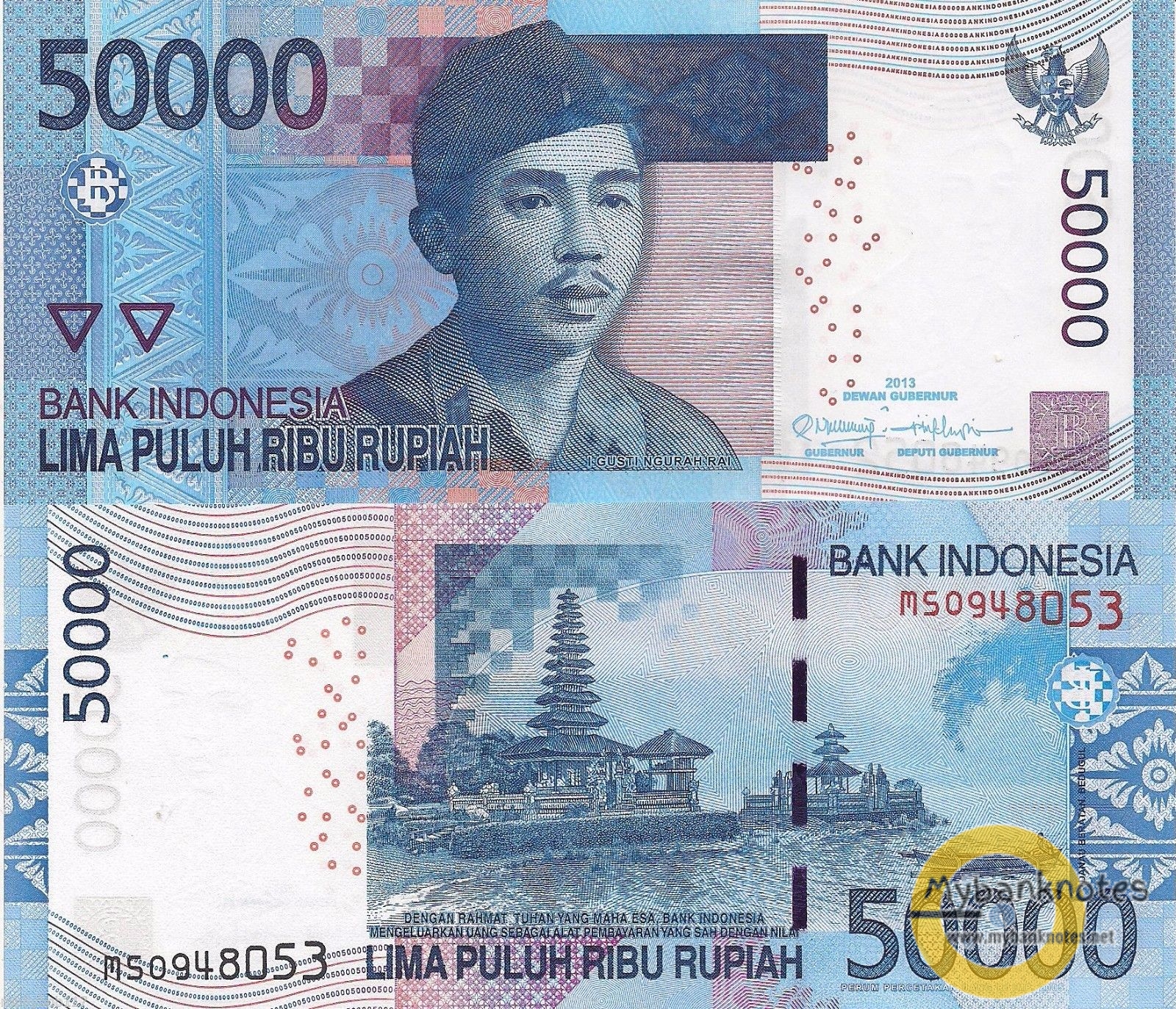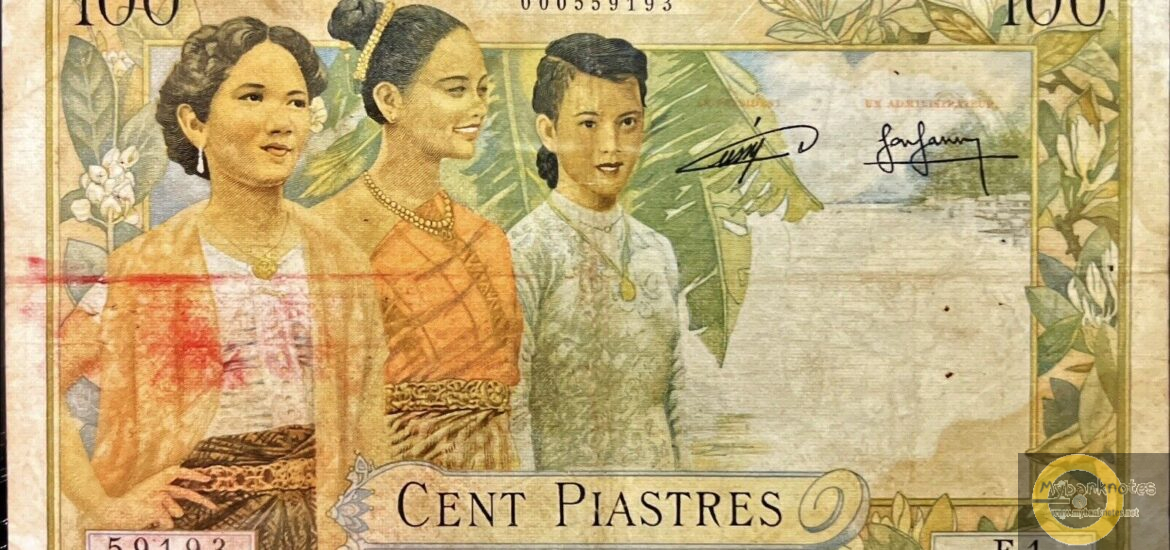Indochinese tiger on the 500 banknote of the Republic of Vietnam
As an endangered species, the Indochinese Tiger was once honored on the 500-denominated banknote of the Republic of Vietnam in 1972.
Overview of the Indochinese Tiger:
The Indochinese tiger or Corbett tiger is a subspecies of tiger found in Cambodia, Laos, Malaysia, Myanmar, Thailand, southern China and Vietnam. The name “Corbett’s tiger” is derived from its scientific name, Panthera tigris corbetti, and the name was given in honor of Jim Corbett, who was a native hunter, conservationist and naturalist He was famous for hunting large numbers of man-eating tigers and leopards
Characteristics of Indochinese Tiger:
Adult male Indochinese tigers are about 2.55 – 2.85 m (8.37-9.35 ft) long, weigh about 150-195 kg (330-430 lb), and have a maximum skull length of about 319-365 mm (13-14 inches). The average adult male tiger is about 2.74 m (9 ft) long and weighs about 180 kg (400 lb). Large individuals can weigh over 250 kg (550 lb). Adult female Indochinese tigers are about 2.30–2.55 m (7.55–8.37 ft) long, weighing 100–130 kg (221–287 lb), with a maximum trunk length of 275–311 mm. (11-12 inches).
The average adult female tiger is about 2.44 m (8 ft) long and weighs about 115 kg (250 lb). After about 3 – 4 months, the female Indochinese Tiger will give birth to cubs, a litter of about five Indochinese Tiger cubs. Newborn Indochinese tigers weigh about 1 kg (2 Ib). Indochinese tigers will drink mother’s milk for the first 18 months, then switch to eating meat. After 18 months, they begin to hunt on their own.
Indochinese tigers are very strong. In Vietnam, there was a reported case of a large male tiger being killed in 1984 near the Vietnam-Laos border. The tiger, which was 2.8 m (9 ft) long and weighed about 250 kg (550 lb), had been attacking villages in its territory for years before being shot down. It killed over 10 buffaloes in the villages, despite residents’ efforts to stop it.
It is said that in one village a 3 m (9.8 ft) high fence was erected around a livestock enclosure, but the tiger was able to jump over it, kill a calf, and jump back out when stole the ill-fated animal weighing about 60 kg (130 lb). This tiger was finally killed when villagers set a trap at the carcass of a buffalo. It fell into a trap when it tried to let the buffalo go and was shot down by villagers. However, the tiger’s body was only found in a stream about 2 km (1.2 mi) away.
Quantity and threat:
t is estimated that the Indochinese tiger population is around 1,227-1,785 animals, but is probably in the lower half of this range. The largest population is in Malaysia, where poaching is tightly controlled, but all remaining populations are currently at extreme risk due to environmental fragmentation. live as well as by inbreeding.
In Vietnam, almost 3/4 of the tigers killed are the source of some traditional medicine herbs such as tiger bone extract. From 2005 to 2010, there were 105 cases of violating the law on tiger conservation discovered, including one live tiger, 17 frozen tigers, and the rest were skin, bones and other parts.
Tiger numbers will be difficult to increase unless people can perceive a live tiger as worth more than a dead one. Several organizations and individuals have begun implementing this idea and hope to use tigers as an attractive animal in ecotourism. In Binh Duong province, Vietnam, as of March 2007, there were about 41 tigers kept in captivity by a number of private individuals and organizations. Currently, these tigers are still temporarily assigned to these individuals and organizations to raise, however, their conservation value is not high because it is difficult to determine their origin and it is impossible to release them back into the forest. At the end of 2010, the Hanoi-based Center for Nature Education estimated that the number of wild tigers in Vietnam had dropped to less than 30. According to statistics from the Education for Nature Vietnam Center (ENV), at the end of 2014 there were 174 tigers kept in captivity in farms, zoos, and rescue centers throughout Vietnam.
Meaning:
By bringing the image of the Indochinese Tiger to the 500 VND banknote in 1972, it not only served to honor and preserve the Indochinese Tiger at that time in the face of an ever-decreasing risk, but also to demonstrate the strength and courage of a nation. animals for a mighty, developed and strong nation.

